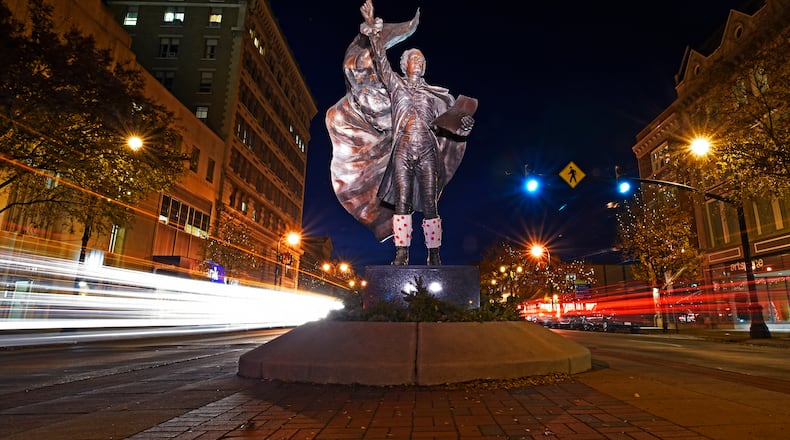On Sept. 30, 1791, construction was finished on Fort Hamilton, built to serve as a supply depot and stables for Army horses that served the campaigns of generals Arthur St. Clair and “Mad” Anthony Wayne during the Northwest Indian War.
The fort was named for Hamilton, who at the time was President Washington’s treasury secretary. Hamilton served as the first U.S. Secretary of the Treasury, a position he held from 1789-95.
Credit: Mike Rutledge
Credit: Mike Rutledge
In 2016, Hamilton celebrated its 225th birthday with numerous events around the city. While most cities celebrate the date they were incorporated, Butler County historian and former Journal-News Editor Jim Blount said Hamilton has honored its founding based on the fort’s completion.
MUST-SEE VIDEO: Hamilton couple launches another big project: Restoring Lindenwald mansion
Blount said Fort Hamilton was about the size of half a football field in 1791, then doubled in size the following year. The fort straddled what would be today’s High Street just east of the Great Miami River, from beyond Market Street on the north, to nearly Ludlow Street on the south, and somewhere between Front Street and Monument Avenue on the east.
In 1795-96, after the battle of Fallen Timbers near Greenville, Fort Hamilton was dismantled. Only the Powder House in the south corner of the fort remained until the Great Flood that occurred along the Great Miami River in 1913.
Credit: HANDOUT
Credit: HANDOUT
Hamilton probably uses the fort’s completion date to mark its birthday because the city’s incorporation story is more complicated. Hamilton was incorporated in 1810, but because of irregularities, the town’s charter was forfeited a few years later, according to a Hamilton Daily News article from Dec. 10, 1932. The city again was incorporated in 1827.
There is a statue of Alexander Hamilton in a median on High Street in downtown Hamilton as a salute to the city’s namesake.
On Aug.16, 2000, Ohio’s governor declared and formally recognized Hamilton as “The City of Sculpture.” This sparked a vision for a group of community members who officially formed Hamilton, Ohio City of Sculpture, Inc. a 503c organization.



